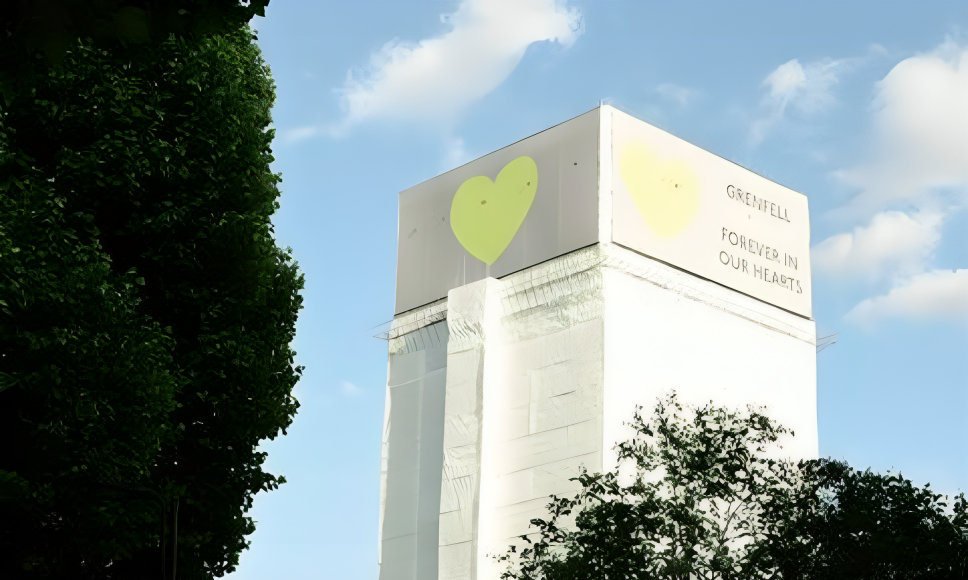The Grenfell Tower fire was one of the most devastating events in recent British history. Occurring on June 14, 2017, this tragic incident claimed 72 lives, leaving an indelible mark on the nation. The tower, located in North Kensington, West London, was home to many families, some of whom had lived there for decades. The fire not only exposed significant failings in building safety regulations but also highlighted the deep-seated inequalities that exist in modern Britain.
Today, more than seven years after the fire, the words “Grenfell Tower now” resonate with an ongoing struggle for justice, remembrance, and meaningful change. This blog post will explore the current state of affairs related to Grenfell Tower, including the aftermath of the fire, the ongoing inquiries, the community’s response, and what the future holds for Grenfell Tower now.
The Immediate Aftermath of the Grenfell Tower Fire
In the immediate aftermath of the fire, the nation was shocked and outraged. How could such a disaster happen in one of the wealthiest cities in the world? The fire started in a refrigerator-freezer in one of the apartments and quickly spread due to the highly flammable cladding that covered the building. This cladding, installed during a refurbishment of the tower in 2016, was later found to be a significant factor in the rapid spread of the fire.
In the days and weeks following the fire, survivors and bereaved families struggled with the loss of their loved ones and the destruction of their homes. Many were left without basic necessities and had to rely on the generosity of strangers and the support of local organizations. The government’s response was widely criticized, with many feeling that they were slow to act and failed to provide adequate support to those affected.
The Grenfell Tower Inquiry

In response to the fire, the UK government established the Grenfell Tower Inquiry, an independent public investigation to examine the causes of the fire and the handling of the aftermath. The inquiry has been divided into two phases. Phase one focused on the events of the night of the fire, including how it started, how it spread, and how emergency services responded. Phase two, which is ongoing, is examining the broader issues, including the role of the organizations responsible for the tower’s management and refurbishment, as well as the wider regulatory and safety issues.
The inquiry has revealed shocking details about the failings that led to the fire. It has exposed a culture of complacency and neglect among those responsible for the safety of the building and the well-being of its residents. Despite the damning evidence, many of those affected by the fire feel that justice has yet to be served. The inquiry has been criticized for its slow progress, and there is frustration that those responsible for the tragedy have not been held accountable.
Grenfell Tower Now: A Community Still Grieving
For the community of North Kensington, the memory of Grenfell Tower now is a daily reality. The tower itself still stands, shrouded in white sheeting, a stark reminder of the lives lost and the promises unfulfilled. Many in the community feel that they have been abandoned by the authorities and that their voices are not being heard.
The survivors and bereaved families have formed groups like Grenfell United, which has been at the forefront of campaigning for justice and change. These groups have been instrumental in keeping the memory of Grenfell alive and ensuring that the tragedy is not forgotten. They continue to push for accountability and for the government to take meaningful action to prevent such a disaster from happening again.
The trauma of the fire is still very much present in the community. Many survivors and witnesses suffer from ongoing mental health issues, including post-traumatic stress disorder (PTSD), depression, and anxiety. The lack of adequate mental health support has been a significant issue, with many feeling that their needs have not been met.
The Wider Impact of the Grenfell Tower Fire
The Grenfell Tower fire has had a profound impact beyond the immediate community. It has sparked a national conversation about building safety, social housing, and the inequalities that exist in society. The fire exposed the dangers of using unsafe cladding on buildings, leading to a nationwide review of high-rise buildings. Thousands of buildings across the UK were found to have similar cladding, leading to a crisis in the housing sector.
Many residents in these affected buildings have been living in fear, knowing that their homes could potentially suffer the same fate as Grenfell. The government has been slow to act in removing the dangerous cladding, leaving many people feeling abandoned and betrayed. The cladding scandal has highlighted the lack of investment in social housing and the disregard for the safety of those living in these homes.
The fire also brought to light the stark inequalities in British society. Grenfell Tower was located in one of the wealthiest boroughs in London, yet its residents were among the most disadvantaged. The fire has been seen by many as a symbol of the neglect and marginalization of low-income communities. It has prompted a wider discussion about social justice and the need for greater investment in social housing and community services.
The Future of Grenfell Tower Now
The future of Grenfell Tower now is uncertain. There have been discussions about what should happen to the site of the tower. Some have called for it to be demolished and replaced with a memorial garden, while others believe that the tower should remain as a permanent reminder of the tragedy. The government has promised that the community will have a say in what happens to the site, but many feel that their voices are not being heard.
In the meantime, the tower remains a haunting presence in the skyline of West London. It serves as a constant reminder of the lives lost and the failure of those in power to protect the most vulnerable in society. The future of the tower and the surrounding area will be shaped by the ongoing campaign for justice and the community’s determination to ensure that such a tragedy never happens again.
The Fight for Justice
The fight for justice for the Grenfell victims is far from over. The survivors and bereaved families continue to campaign for those responsible to be held accountable. They are also fighting for changes to building regulations and fire safety laws to ensure that no other community has to endure the same horror.
One of the key issues that campaigners are focusing on is the need for more robust fire safety measures in high-rise buildings. The fire at Grenfell exposed significant failings in the building’s fire safety systems, including the lack of sprinklers and the failure of the “stay put” policy. Campaigners are calling for all high-rise buildings to be fitted with sprinklers and for a review of fire safety policies.
Another important issue is the need for greater accountability. Many of those affected by the fire feel that the inquiry has been slow to deliver justice and that those responsible for the tragedy have not been held to account. There is a growing demand for criminal charges to be brought against those whose actions or inactions contributed to the fire.
The Role of the Government
The role of the government in the Grenfell Tower tragedy has been widely criticized. Many believe that the government’s failure to enforce building safety regulations and its neglect of social housing played a significant role in the disaster. The response to the fire has also been heavily criticized, with many feeling that the government has failed to provide adequate support to the survivors and the bereaved families.
In the years since the fire, the government has introduced some changes to building regulations and fire safety laws, but many feel that these changes do not go far enough. There is a need for more comprehensive reforms to ensure that all buildings are safe and that the safety of residents is prioritized.
The cladding scandal, in particular, has been a significant issue, with the government being accused of failing to act quickly enough to remove dangerous cladding from buildings. Many residents are still living in unsafe homes, and there is a growing frustration with the lack of progress in addressing this issue.
The Importance of Remembrance
As we reflect on Grenfell Tower now, it is essential to remember the lives that were lost and the impact that the fire has had on the survivors and the community. The memory of Grenfell should not be allowed to fade. It is crucial that the lessons learned from the tragedy are not forgotten and that meaningful changes are made to prevent such a disaster from happening again.
The annual Grenfell anniversary is an important moment of reflection and remembrance. Each year, the community comes together to remember the 72 lives lost in the fire. The anniversary is marked by vigils, marches, and other events, all aimed at keeping the memory of Grenfell alive and ensuring that the fight for justice continues.
Conclusion: Grenfell Tower Now and the Road Ahead
The words “Grenfell Tower now” encapsulate a story of tragedy, resilience, and the ongoing struggle for justice. While the fire at Grenfell Tower was a devastating event, it has also sparked a movement for change. The survivors, the bereaved families, and the wider community have shown incredible strength in the face of adversity. They have refused to be silenced and continue to fight for justice and meaningful change.
The future of Grenfell Tower now is uncertain, but what is clear is that the memory of the fire will continue to shape the community and the nation for years to come. The fight for justice is far from over, and the lessons learned from the tragedy must not be forgotten. The legacy of Grenfell Tower now must be one of remembrance, accountability, and a commitment to ensuring that such a disaster never happens again.



